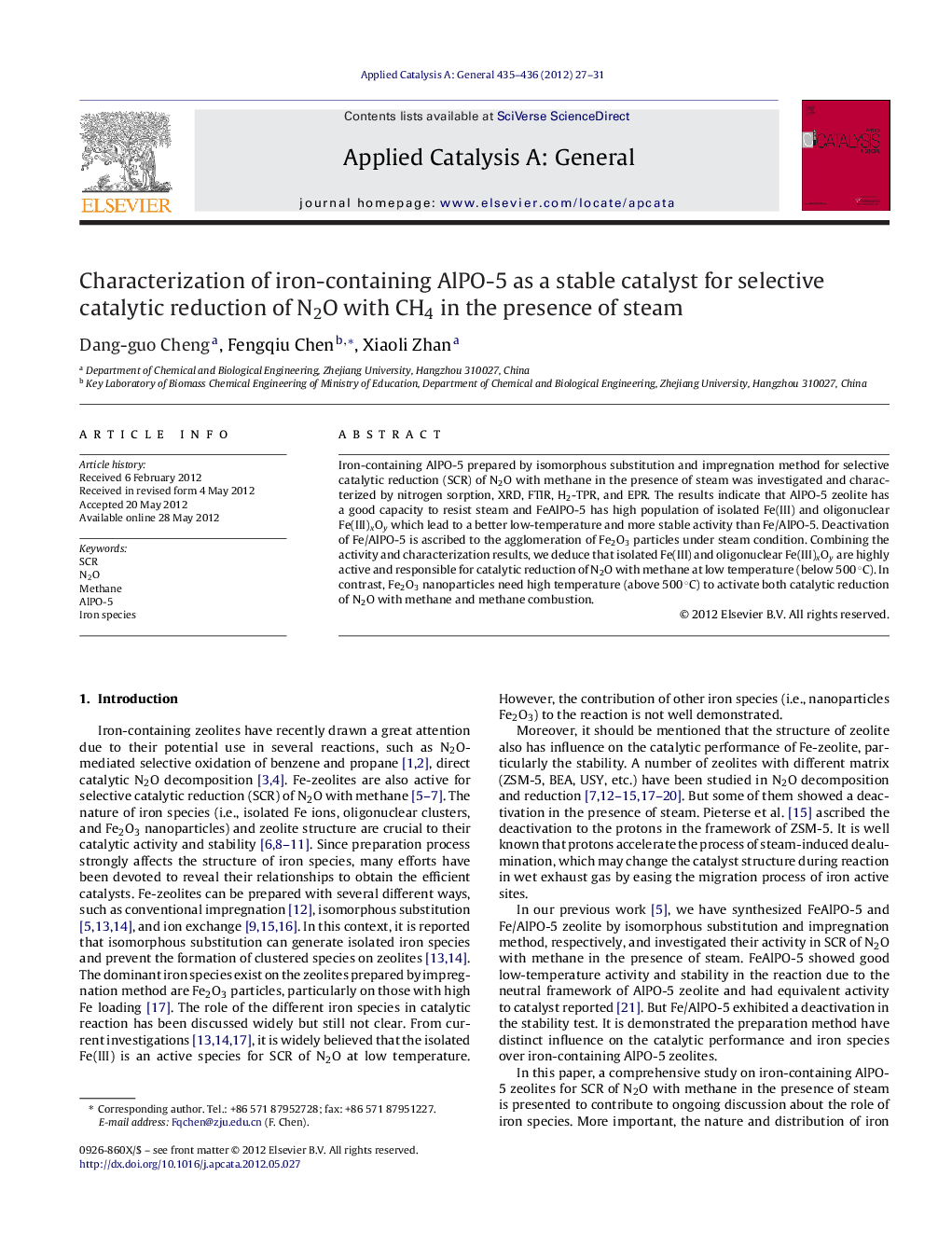| Article ID | Journal | Published Year | Pages | File Type |
|---|---|---|---|---|
| 40813 | Applied Catalysis A: General | 2012 | 5 Pages |
Iron-containing AlPO-5 prepared by isomorphous substitution and impregnation method for selective catalytic reduction (SCR) of N2O with methane in the presence of steam was investigated and characterized by nitrogen sorption, XRD, FTIR, H2-TPR, and EPR. The results indicate that AlPO-5 zeolite has a good capacity to resist steam and FeAlPO-5 has high population of isolated Fe(III) and oligonuclear Fe(III)xOy which lead to a better low-temperature and more stable activity than Fe/AlPO-5. Deactivation of Fe/AlPO-5 is ascribed to the agglomeration of Fe2O3 particles under steam condition. Combining the activity and characterization results, we deduce that isolated Fe(III) and oligonuclear Fe(III)xOy are highly active and responsible for catalytic reduction of N2O with methane at low temperature (below 500 °C). In contrast, Fe2O3 nanoparticles need high temperature (above 500 °C) to activate both catalytic reduction of N2O with methane and methane combustion.
Graphical abstractFigure optionsDownload full-size imageDownload high-quality image (149 K)Download as PowerPoint slideHighlights► FeAlPO-5 shows a low-temperature and stable activity in SCR of N2O with CH4 in the presence of steam. ► Fe2O3 nanoparticles need high temperature (above 500 °C) to activate the reduction of N2O. ► The site accessibility is an important factor that determines the activity of the zeolites.
